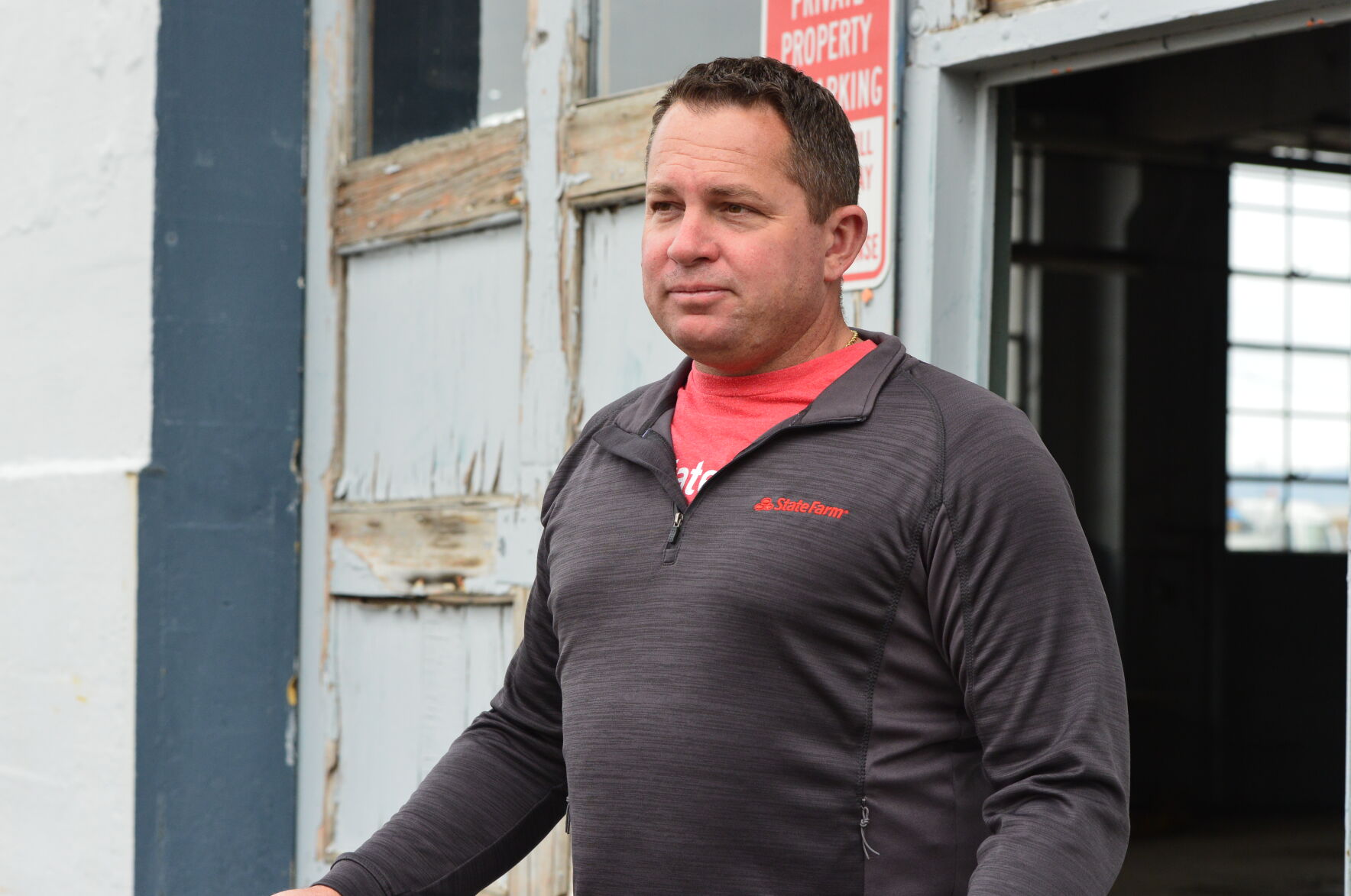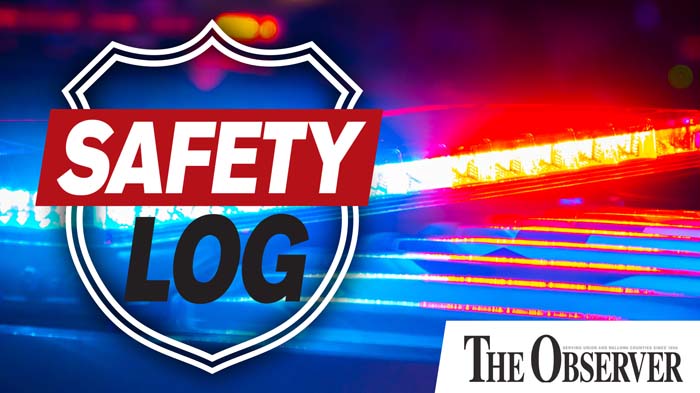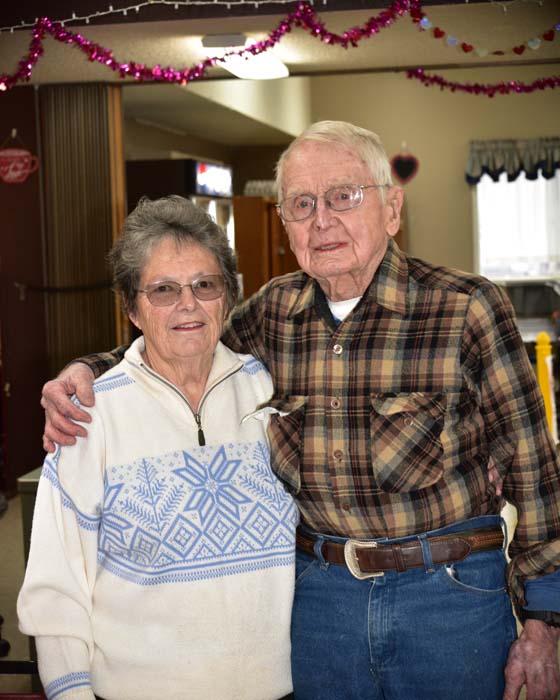Oregon bottle deposit likely to double in 2017
Published 7:30 am Friday, June 24, 2016

- Kimberly Heiney and her nephew, Zane Hughes, 6, load bottles into a reverse vending machine to redeem deposits at the BottleDrop center in Bend on Wednesday. The deposit on bottles and cans in Oregon is likely to increase from 5 cents to 10 cents next year. (Joe Kline / The Bulletin)
One by one, nearly 100 bottles and cans slide from Ken Turpin’s hands and disappear into the sticky surface of the reverse vending machine. It doesn’t take long, and it appears Turpin has the bottle return process down to a science.
Turpin, from Bend, visits the Bend BottleDrop center twice monthly and says for him, it’s more convenient than when bottle returns were at grocery stores.
“It’s faster, and I don’t need to wait for someone to come and do it for me,” he said. “It’s not rocket science.”
And it’s clear he is not the only one who thinks so. On a Wednesday morning, almost all 10 of the reverse vending machines are in use, some by people who came with a few empty six-packs and some who filled the backs of their SUVs with containers. The center accepts up to 350 containers per person per day, meaning those who loaded up on bottles could be making up to $17.50 a day — enough for around 7 gallons of gas or a minimal trip to the grocery store.
And that $17.50 might double, if the bottle deposit goes from a nickel to a dime next year.
This all has to do with the Bottle Bill, an Oregon law passed in 1971, that creates an incentive for consumers to return their carbonated beverages and beer containers to be recycled. Retailers pay a 5-cent deposit per container to beverage distributors, and are then paid a 5-cent deposit per container by consumers; when consumers return their containers to be recycled, the process reverses and essentially ends in a wash for the distributor, retailer and consumer.
But evidently 5 cents isn’t what it used to be. In fact, 5 cents in 1971 was worth what 30 cents is now — and it’s showing in the bottle return rates, which Cherilyn Burtges of the Oregon Beverage Recycling Cooperative says are markedly lower than they were in the ’70s. Annual return rates were around 70 percent in 2012, 2013 and 2014, compared with returns in the 90th percentile in the ’70s.
On July 22, the Oregon Liquor Control Commission will determine the return rate for 2015. If it is again below 80 percent, the Bottle Bill deposit will double next April 1, in accordance with a bill the Legislature passed in 2011. Under the bill, if return rates are below 80 percent for two consecutive years, the deposit will go from 5 cents to 10 cents — but not before 2017. Representatives from both the liquor control commission and the beverage recycling cooperative are expecting to see it happen.
“We think the (deposit) increase is likely. We’re expecting it to probably go up,” Burtges said. “And we expect this to increase return rates.”
The original intent of the Bottle Bill, legislation that Oregon pioneered and has since been replicated in 12 other states, was to reduce the amount of litter left in cities, parks and beaches.
The Bottle Bill container return process, which involves the on-site separation of recyclables at retailers or return centers, also means that nearly 100 percent of the returned containers are successfully recycled.
Bottle Bill basics
The same bill that called for the potential increase of the deposit also jump-started the formation of the BottleDrop return centers. These centers, now in 16 locations around the state including Bend and Redmond, allow consumers to return their bottles and receive their deposits at the centers instead of bringing them back to retailers.
Retailers in the vicinity of a BottleDrop center can opt out of some or all of their Bottle Bill obligation to collect returned containers by helping to sponsor their local center.
Christie Scott, alcohol program spokeswoman for the OLCC, says these centers boast more convenient methods and hours for beverage container returns. People can choose to use the self-serve reverse vending machines or have smaller quantities be counted by hand. There is also an option to drop off a special return bag at any hour to have their containers counted and their accounts credited. The center also recycles cardboard beverage holders, plastic bags and any beverage containers not accepted by the machines.
The Bend BottleDrop Return Center processes about 1.8 million beverage containers per month, and the Redmond center averages about 1 million, according to Burtges.
The centers are funded by the Oregon Beverage Recycling Cooperative, a partnership of beverage distributors and retailers. Distributors have been tasked by the Bottle Bill to largely foot the cost of the beverage container return program.
When consumers don’t return their beverage containers, and thus don’t receive their returned deposit, the deposit stays with the beverage distributor. At least some of the unreturned deposit money is put toward paying for the recycling program, and picking up and processing returned containers from retailers around the state.
But, according to Burtges, because the return rate is calculated using the number of containers sold, a private sales figure, it is impossible to tell just how much money beverage distributors are bringing in from unreturned deposits. However, she says 100 percent of this money is put toward either the recycling program or community education and public awareness campaigns.
If the deposit increase is successful in bringing up return rates, it will mean more consumers claiming their deposits and more returned containers for companies to process. But if it isn’t, it may mean distribution companies will have double the amount of unreturned deposit money to do the same work.
A task force identifying more avenues for funding the Oregon Department for Fish and Wildlife also looked at the Bottle Bill’s unredeemed deposits, which they found to be about $25 million per year, as a potential source of money.
Effects of a deposit increase
For consumers like Turpin who make a habit of bringing back their own beverage containers, the increase wouldn’t change much other than a few extra cents being passed around in the process.
But for people who rely on the little extra cash they can earn from picking up bottles and cans littering their neighborhoods or other public places, the deposit hike could be more meaningful. The jump from 5 to 10 cents could mean those bringing in the max number of containers making up to $35 per trip — double the amount of gas or grocery money.
There is also a chance that, if people have greater motivation to return their own bottles, those who count on picking up others’ beverage containers could lose income.
On the other side of the spectrum are consumers who choose to recycle their beverage containers on the curb rather than bringing them back to a return center. They’ll pay an additional 5 cents per bottle for a deposit that they won’t be getting back.
However, Brad Bailey, president of Bend Garbage and Recycling, doesn’t anticipate an increase in the deposit to have a significant impact on the curbside recycling program.
“More people may return their recyclable containers (to return centers) than do currently, but I don’t think (the increase) is going to have a major effect on the curbside program and those who use it,” he said.
According to Bailey, the price of curbside recycling, which is built into garbage pickup rates, will not change if the increase does go through.
Just as it was the first state to establish the Bottle Bill, Oregon would be the first state to increase the container deposit, so there is no way of knowing exactly what kind of changes it might bring, Burtges said.
Michigan is the only other state offering a 10-cent deposit, but this amount has been in place since the state’s law was enacted. Its return rate, at just over 94 percent, is one of the highest among Bottle Bill states.
“I think that as Oregonians, we take pride in having the Bottle Bill, in being the first to create it and in how clean our public areas are,” the OLCC’s Scott said. “I think the increase would encourage this.”
— Reporter: 541-633-2108,
cduffy@bendbulletin.com





